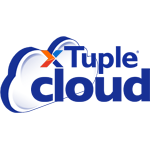
Speaking at the Software & Information Industry Association (SIIA) “All About the Cloud” (AATC) conference, Marc O’Brien, Vice President of Business Development at xTuple, noted a key trend — morphed into “the cloud” — the concept of commercial open source. As open source software becomes mission-critical, it’s important to have a reliable vendor who can support it. The open source movement is gaining steam today. Whereas, just a few years ago, open source software might not have been on a CIO’s top-of-the-list for a first look. There are many examples – government and large enterprise – where open source is looked at first for a variety of reasons — security being chief among them, as well as total cost of ownership and innovation velocity. O'Brien predicts more leaders in different industry segments move from proprietary vendors to commercial open source — for example, xTuple in the ERP world.
xTuple talks about commercial Open Source growing up
The economics of SaaS [video], originally called ASP (application service provider), were very difficult in the beginning when O'Brien founded WebProject, the first Internet-based team application and pioneer in On-Demand applications with the backing of Cisco and Sun Microsystems. He then co-founded cloud and open source technology company, Projity, a project management On-Demand software. The five or six year gap between these companies saw a great leap in the economics of bringing a new SaaS product to market. The value proposition was there but now the economics worked, too.
In this video of the AATC 2013 | The Next Generation Panel, O'Brien (at the 20:00 minute mark, followed by Q&A) introduces xTuple to the members of SIIA, attributing the company's success to the velocity of innovation in an older, more mature core business market like ERP, represented by customers such as U-Haul manufacturing facilities. xTuple’s business model is commercial open source, and innovations include a Mobile Web application that connects with the classic Desktop software, enabling a connection to xTuple databases on premise or in the Cloud. While the low total cost of ownership is attractive, the innovation is what makes commercial open source xTuple ERP a Next Gen-worthy software company. Why does the open source community matter? It drives the innovation.
During the AATC, O'Brien also highlighted open source Cloud/SaaS successes in this video: Pentaho and Jaspersoft in the business intelligence area, and Colosa with business process management. SugarCRM and X2Engine — which is from John Roberts (one of SugarCRM’s founders) in the CRM/Customer Relationship Management space. While he may have a bias toward productivity and business management software, the software industry is seeing strong vendors with serious solutions in their each of their respective segments.
SaaS users almost tend toward attention deficit; they want satisfaction very quickly from their software. Salesforce pioneered a seamless on-boarding experience, and others have adopted that model. You really have to look at that 5-minute user experience as a cloud or SaaS vendor and nail it. O'Brien is a huge proponent of the user experience (UX) discussed in this video.
The recurring revenue model of SaaS, referenced in this video, works from the customer’s standpoint. While the customer may or may not have some contract lock-in, times have changed. If a SaaS vendor isn’t providing value consistently, there are alternatives. Companies, such as xTuple, do a really nice job with support to ensure customer satisfaction is high – you actually get a person on the phone. According to O'Brien, the SaaS model has caused companies to readdress their internal business process flow for supporting their software. Churn, in and of itself, is not good, but it does serve as a vendor’s “canary in the coal mine,” so they can address the cause of the customer dissatisfaction.
Speed to market is critical [video]. Unseasoned entrepreneurs try for perfection to look good at initial release, but the opposite is really the case. Getting the product out fast is more important than being perfect to ensure you’re receiving critical feedback from the marketplace. One of the things I’ve learned in the software marketplace is to get a MVP (minimally viable product) out very quickly, and then enlist bug fixes or great ideas from the community. Hundreds of countries use the software I work with; it’s amazing the kind and amount of geographically diverse feedback you can get.
Balancing growth, profitability and cash-flow in a SaaS model [video]. You have to recognize the revenue on a pro-rated basis; but financials don’t always look as good. Salesforce was a SaaS pioneer. Wall Street, although they understood the model, didn’t appreciate it, didn’t recognize the difference between an accounting profitability number and the cash-flow. It’s balancing act. If you have an innovative solution, and you’re a leader, you have to be willing to absorb some of the financial hits. The “land grab” — or industry domination — is what’s most important.
Open source plus Cloud equals tremendous and dynamic distribution. xTuple PostBooks is downloaded and used in the Cloud, or on premise, weekly in over 100 countries. This distribution model gives us the capability to deliver a software solution, regardless of location around the world. People are looking at commercial open source first [video] to see what’s available.
Thanks to the Montclare Group for creating and sharing these videos.
